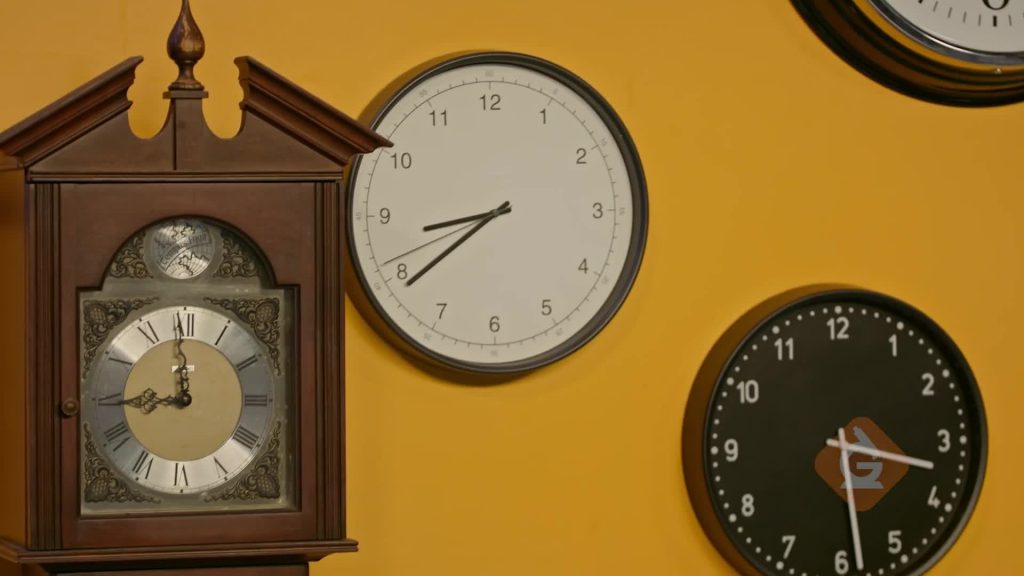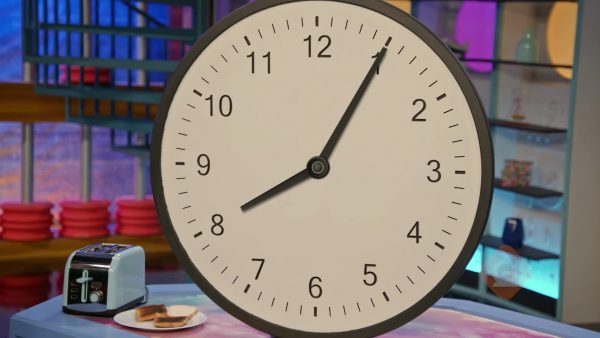
The minute hand tells you how many minutes past the hour. The lines on a clock show 5 minutes at a time. You can skip count by fives to find how many minutes.
To better understand telling time to the nearest minute…
LET’S BREAK IT DOWN!
Counting Numbers

Knowing how to tell time to the nearest 5 minutes can keep you from burning your snack. Suppose you are baking some chicken fingers. The time is 3:00. The chicken fingers will be done at 3:20. What number on the clock will the minute hand point to at 3:20? Each number on the clock represents 5 minutes. So, you can start at 12 and count by 5s until you get to 20. 1 is 5 minutes, 2 is 10 minutes, 3 is 15 minutes, and 4 is 20 minutes. This means the minute hand will be pointing to the 4 at 3:20. That’s when you can take the chicken fingers out of the oven. Try this one yourself. Suppose your pizza is in the oven and will be done at 5:40. What number on the clock will the minute hand point to when you can take the pizza out of the oven?
Counting Ticks

Knowing how to tell time to the nearest minute can help make sure you do not miss your bus. Suppose a clock shows that the time your bus picks you up is when the hour hand is between 7 and 8 and the minute hand is 2 dashes past 7. You can figure out what time the bus picks you up by first naming the hour. The hour hand is between 7 and 8, so the hour is 7 because you always choose the number that comes first. Each number on the clock represents 5 minutes, so you can count by 5s to 7: 1 is 5 minutes, 2, is 10 minutes, 3 is 15 minutes, 4 is 20 minutes, 5 is 25 minutes, 6 is 30 minutes, and 7 is 35 minutes. Each dash represents 1 minute. So, start at 35 and count on by 1s to get the minutes: 35, 36, 37. The bus picks you up at 7:37. Try this one yourself. Suppose a clock shows that the time your bus drops you off after school is when the hour hand is between 3 and 4 and the minute hand is 3 dashes past 2. What time does the bus drop you off?
All Types of Clocks

Once you know how to read one analog clock, you can read any clock. Some clocks have different symbols for the numbers. There is even a clock that uses dominos for the numbers. Telling the time works the same no matter what the symbols are. There are 12 symbols, each 5 minutes apart. Start by finding where the 1 should be on the clock and think of that symbol as 1, the second symbol as 2, and continue around the clock until you get to 12 so you can use the numbers you are used to. This can work even if the clock has no numbers because you can place the numbers where they should be. Suppose the hour hand is between the symbols V and VI, which are Roman numerals for 5 and 6. And suppose the minute hand is pointing to X, which is the Roman numeral for 10. What time is on the clock? The hour is 5 because the hour hand is between 5 and 6 and 5 is the number that comes first. If you count by 5s from the first symbol to 10, that is 50. So, the time is 5:50. Try this one yourself. Suppose a clock has no numbers on it. The minute hand points straight up and the hour hand points to the right. What time is on the clock? You can draw a picture to help you.
TELLING TIME (NEAREST MINUTE) VOCABULARY
TELLING TIME (NEAREST MINUTE) DISCUSSION QUESTIONS
How many minutes are in 1 hour? Does each number on the clock represent 1 minute?
Show the time 1:50 on the analog demonstration clock. Is the time 1:10? Explain.
Explain where you would draw the hands to show 7:17.
Would you get the same answer if you started the minute hand at 12 and just counted 17 dashes? Explain.
Show 12:38 on the analog demonstration clock. Explain how to find the time on the clock.
Skip, I will use a 3 day free trial
Enjoy your free 30 days trial
We use cookies to make your experience with this site better. By using this site you agree to our use of cookies. Click "Decline" to delete and block any non-essential cookies for this site on this specific property, device, and browser. Please read our privacy policy for more information on the cookies we use.Learn More
We use cookies to improve your experience. By using this site, you agree to our use of cookies. Click "Decline" to block non-essential cookies. See our privacy policy for details.Learn More






